- Explore Our Campus
- Art/Sculpture Garden
Sculpture Garden
Discover the artistry and rich history of the Dallas Market Center's featured art sculptures, which have been lovingly curated and collected over time by the Crow family, to showcase the beauty of our surroundings. As you wander through our campus, you'll encounter masterpieces that celebrate the diversity and heritage of many cultures. Each sculpture tells a story, inviting you to connect with the past while embracing the present. Come experience the beauty and history that our art sculptures have to offer.
-
TRADEMART
-
WORLD TRADE
Josep Maria Subirachs (Spanish, 1927-2014)
BronzeSubirachs was a Spanish sculptor and painter of the late 20th century. Catalonia’s best-known sculptor, he is mainly associated with his controversial sculptures for the Passion Façade of Antoni Gaudi’s famous Sagrada Familia basilica in Barcelona. Over nearly 20 years, Subirachs carved 100 stone figures and made four vast bronze doors for the church’s façade. Subirachs experimented with various materials, joining blocks of cement and wood or using iron and bronze, as well as stone. He rediscovered the human figure in the mid-1960s and developed his mature expressionist style of rough-surfaced, sharp-angled, and anguished figures. Machetes of World Trade served as awards for Dallas Market Center’s World Trade Award, which was presented annually to the Dallas exporter and importer who made the most significant impact on trade each year.
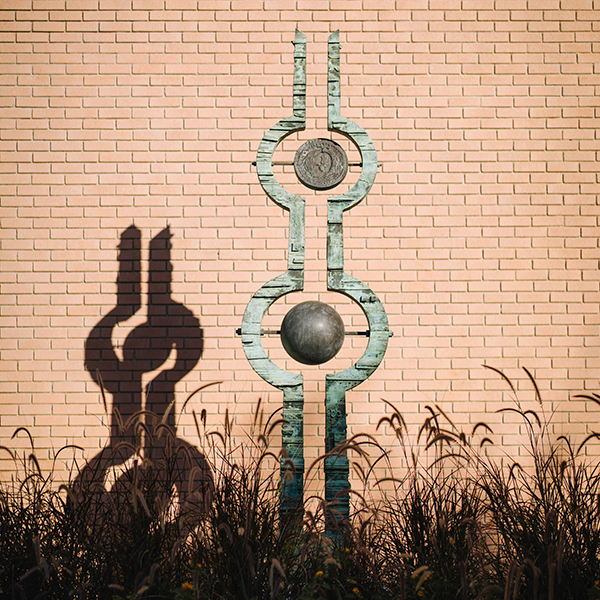
THE EAGLE
Elisabeth Frink (English, 1930-1993)
Bronze & StoneThe Eagle stands as a memorial to the life of President John F. Kennedy, who was en route to speak at the Trade Mart when he was assassinated on November 22, 1963. Dallas leaders came together to fund this tribute by English sculptor Elizabeth Frink, whose animal sculptures encapsulate the uneasy tension between predator and prey. She likened her birds to bits of shrapnel, part organic, part machine. Frink’s lectern evolved out of her previous bird works, and also studies of the birds at the London Zoo. To create the feathers, she set kindling sticks into the plaster. Formally dedicated in 1964, it features the words of William Blake, “When thou seest an eagle, thou seest a portion of genius. Lift up thy head!”
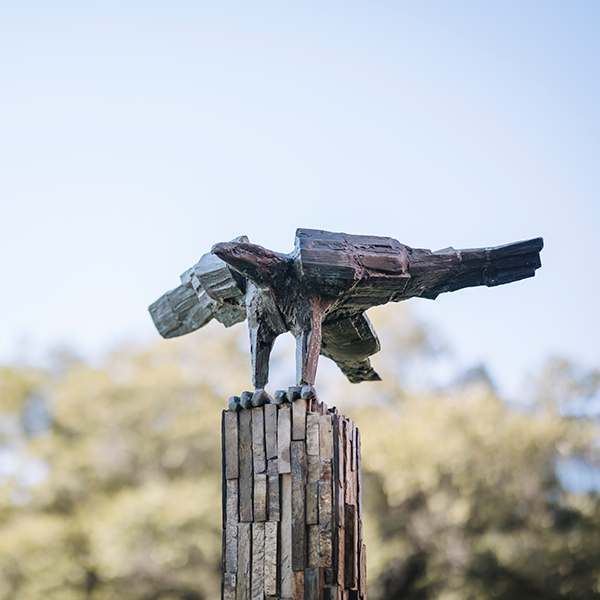
TENSIONE
Aldo Calo (Italian, 1910-1983)
BronzeAldo Calo was an Italian sculptor whose early influences included ancient art, Catholicism, and baroque architecture and decorations. Calo developed a style characterized by a profound knowledge of materials and a sensitivity to form. His abstract work defied convention, centering on motifs of dualism, bi-dimensionality, and opposition. Tensione displays a dynamic, precarious equilibrium. It is simultaneously rising up and stretching horizontally, creating palpable tension as the sculpture pulls in both directions. Miniature replicas of Tensione served as Dallas Market Center’s Editorial Award, an annual citation for outstanding contributions in publication in the home furnishings industry.
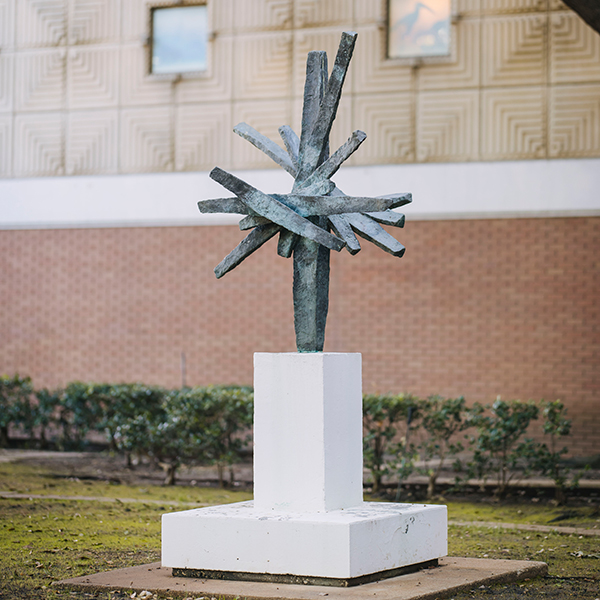
INDIAN PRINCE WITH ROYAL CONSORT
Artists Unknown (17th Century)
This fine stone group of an Indian King and Queen was formerly installed in the royal palace in the Kerala region of southern India. Due to its unique typography, Kerala was exposed to many foreign influences and developed a unique culture. The region’s art forms include wood paintings, murals, and decorative lighting.
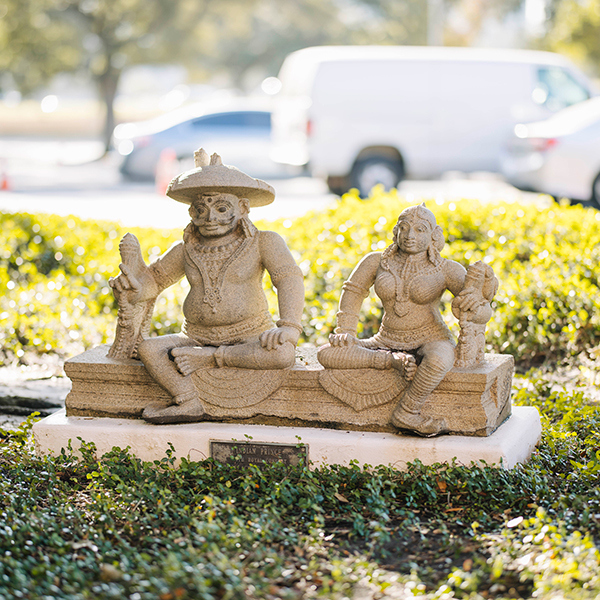
ENDANGERED SPECIES
David Cargill (American, b. 1928)
BronzeDavid Cargill is a Texas artist whose powerful work evokes emotion through storytelling. His large- and small-scale sculpture can be seen in a variety of public, sacred, commercial, and private spaces in the U.S. and beyond. His work evinces his boundless imagination as he manipulates materials to create sculpture that seems to move, twist, and breathe. With Endangered Species, unveiled in 1979, a whimsical whooping crane leans forward while a figure reaches out to help another climb up the bird’s neck.
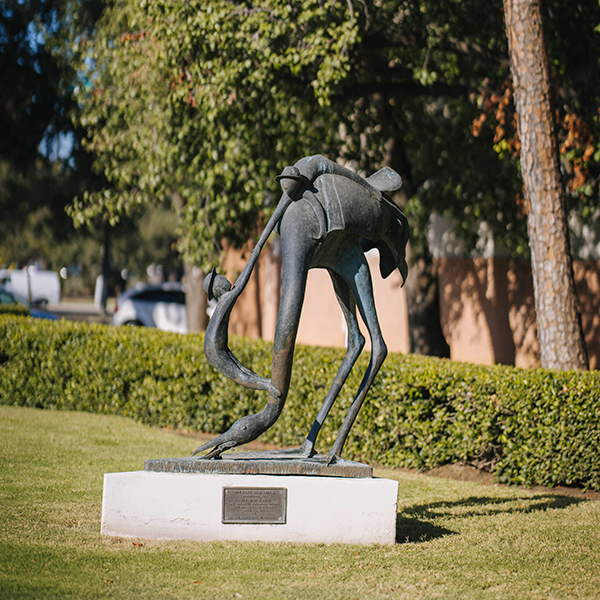
THE POTS CARRIER
Adam Henein (Egyptian, 1929-2020)
BronzeOne of the most influential Arab artists of his generation, Adam Henein worked in traditional Egyptian materials like wood, bronze, granite, and papyrus. Born into a family of metalworkers, his work interweaves universal themes, with abstract and representational imagery, to create modernist forms. One of Henein’s most lauded commissions was working with his wife on the restoration of the cultural heritage site for the Sphinx of Giza. His work has been exhibited in the U.S., Europe, and the Arab world. He founded the International Sculpture Symposium and a museum dedicated to his work is located in Cairo. The Pots Carrier is a stylized figure transporting vessels which may contain water or other precious resources.
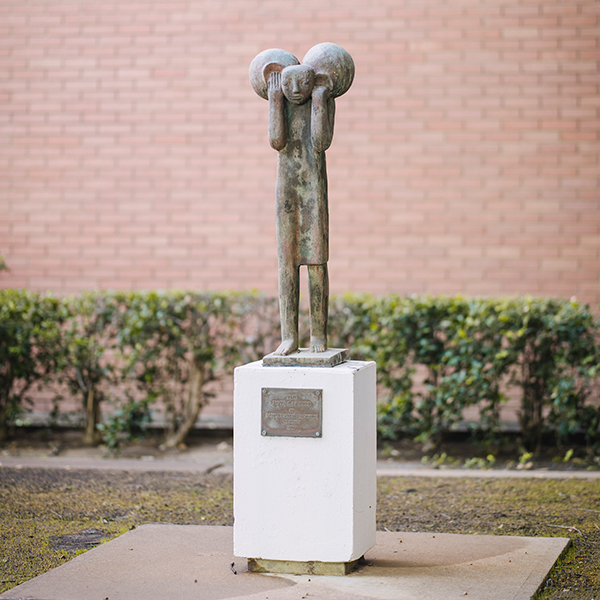
FIGURE IV
Hans Aeschbacher (Swiss, 1906-1980)
GraniteHans Aeschbacher was a Swiss artist who was a draftsman, painter, and sculptor. He began sculpting around age 30 and his work was abstract and austere. While his early work was primarily composed of terra-cotta and plaster, later work was made of stone, metal, and porous volcanic rock. Aeschbacher had several solo exhibitions and his works were shown in the Venice Biennale. Inspired by the female form, Figure IV and others in the “Figuren” series featured slender, geometrical planes pushing upward.
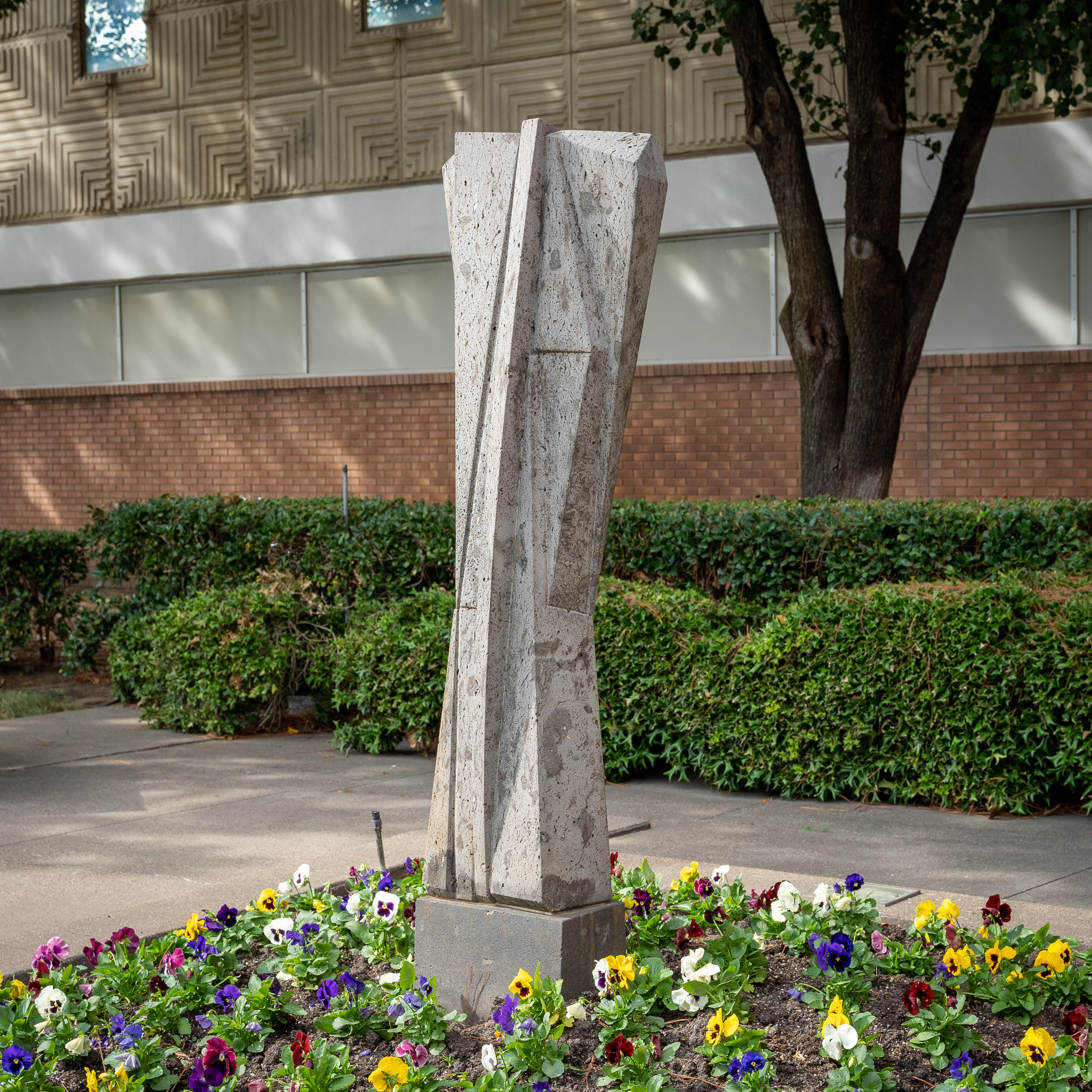
-
-
WORLD TRADE CENTER
-
LE GRANDE DOUBLE
Alicia Penalba (Argentinian, 1913-1982)
BronzeAlicia Penalba was an Argentine sculptor who worked in clay, concrete, and bronze. After studying in Paris, she had her first solo exhibition in 1957. Penalba is recognized for her large-scale, abstract and biomorphic forms. She also designed tapestries, jewelry, and porcelain. Her works are featured in museums across Europe, South America, and the U.S. The 9-foot Le Grande Double features organic shapes that somewhat resemble bark. Between 1959 and 1972, Penalba created eight versions of the piece in sizes ranging from 7” to an astonishing 27’.
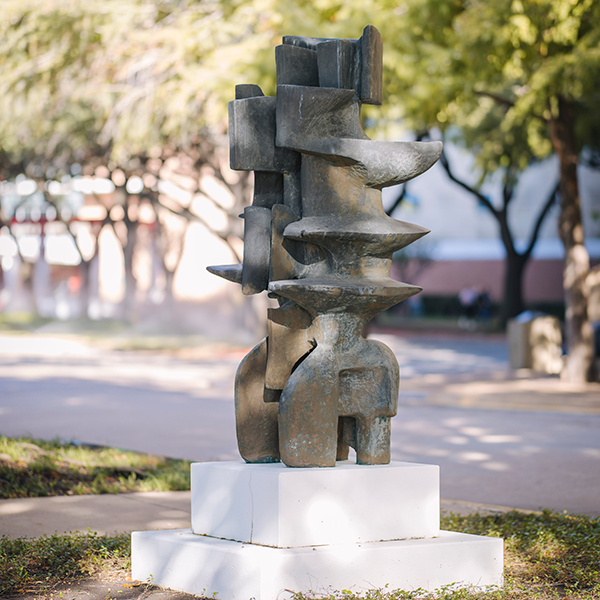
SINGING MAN
Elizabeth Turolt (Austrian, 1902-1966)
BronzeElizabeth Turolt was an Austrian sculptor. Originally self-taught, she later perfected her craft with private lessons in Vienna. While she also worked as a goldsmith, she’s best known for her large-scale sculptures in Austria. Many of her works celebrate animal life, but Singing Man features a life-size figure belting out a tune from his songbook.
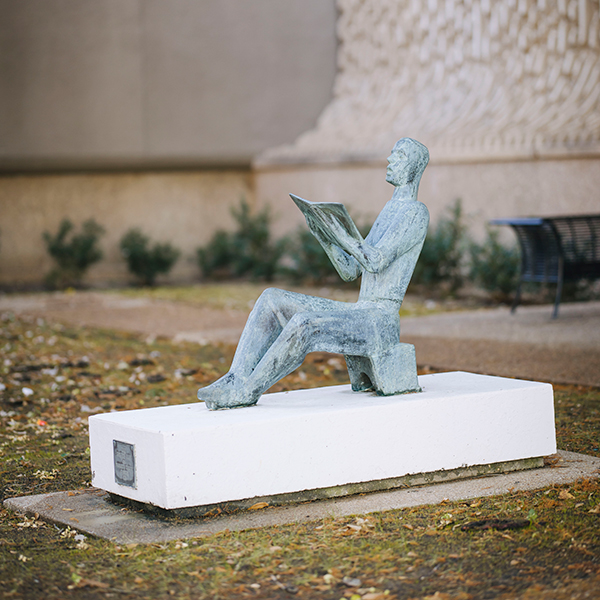
CORTENS
Dušan Džamonja (Yugoslavian, 1928-2009)
MetalDušan Džamonja was a Yugoslav, Croatian, and Serbian sculptor of Serbian ancestry. His influential and visionary work features materials such as bronze, wood, glass, and stone. His first solo exhibit was in 1954 and he went on to win awards internationally. Notably, he designed several monumental memorial complexes marking the lives lost during WWII. His large scale sculptures often featured simple shapes made by complex designs. In Cortens, Džamonja solders countless spikes into a mass that again becomes solid. His organic configurations allow an interplay of light and darkness.
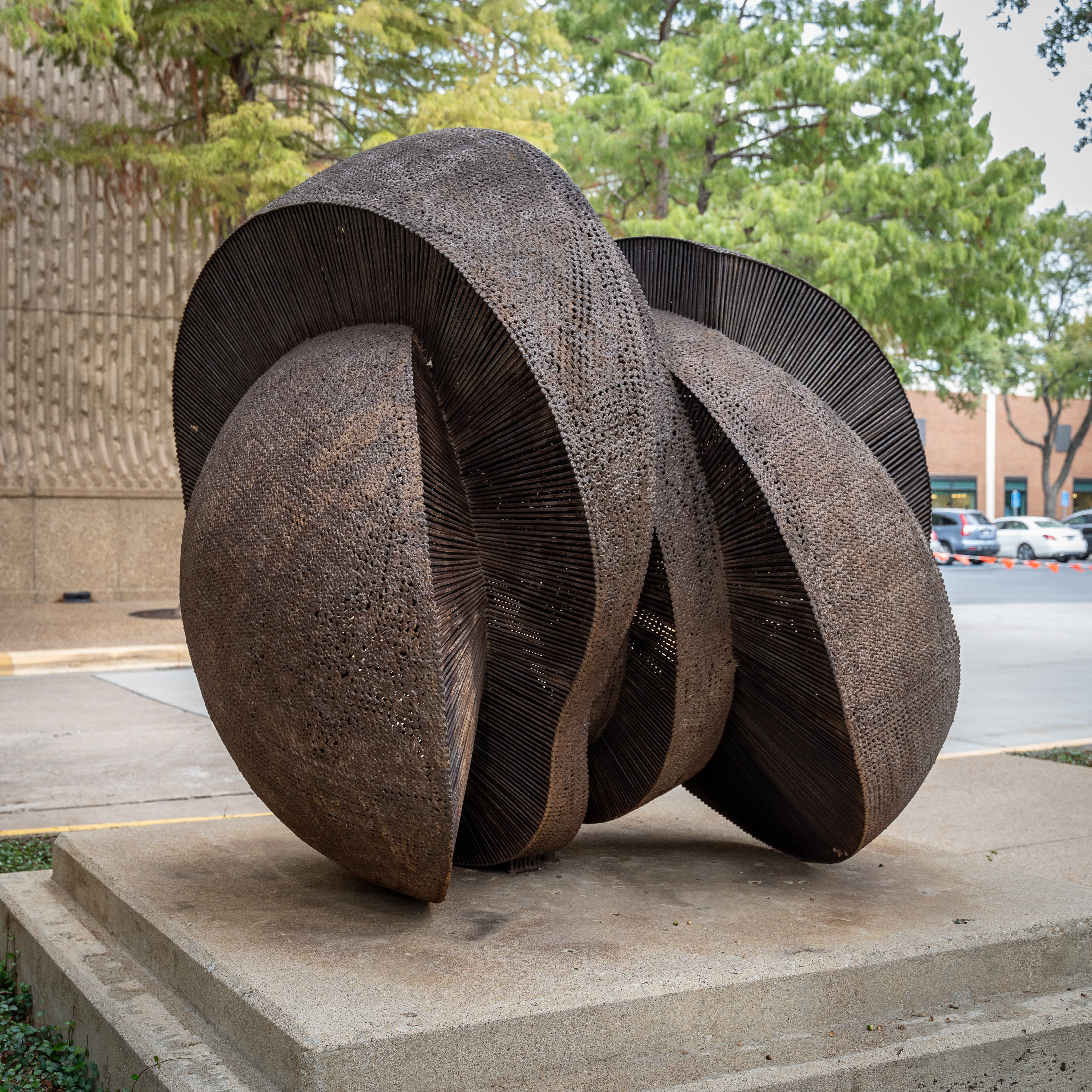
PAIR OF MOMUMENTAL TOMB GUARDIAN HORSES
Artists Unknown
GraniteDating to the Han Period (202 B.C.-220 A.D.), this pair resembles the monumental stone horses found at the tomb of General Ho Ch’u-Ping of the Han Dynasty. This was a period of significant expansion and introduction of many new ideas and works of art. This pair could be the first kind of stone sculpture ever created in Chinese art history and are likely one-of-a-kind items.
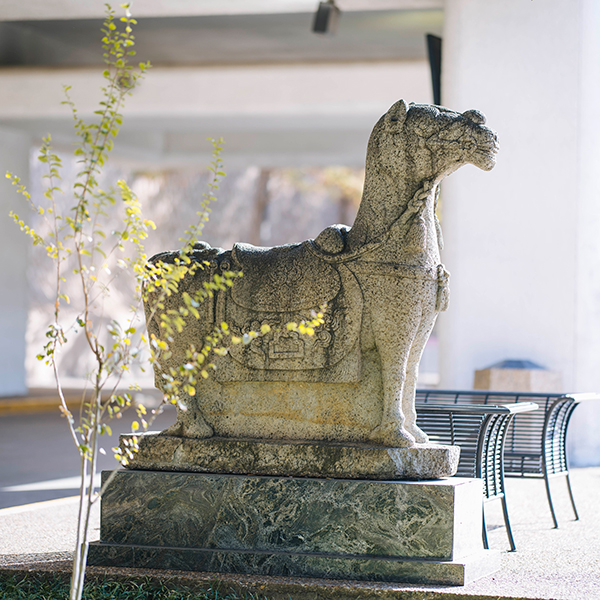
PAIR OF ANTIQUE STONE ELEPHANTS
Artists Unknown
MarbleThere are many superstitions associated with the elephant, particularly their trunks. In Western cultures, predominantly the belief is that the trunk should always be facing up to bring good luck, while in Eastern cultures the trunk should be facing down to bring good fortune. In Thailand, the elephant brings good luck no matter which way its trunk is facing.
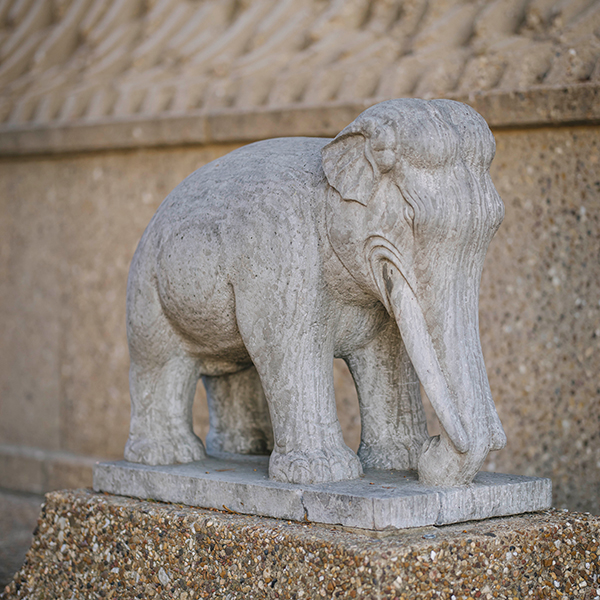
-
-
INTERIOR HOME + DESIGN CENTER
-
THE BEAR
Mogens Bøggild (Danish, 1901-1987)
Cast StoneMogens Bøggild was a Danish sculptor educated at the Royal Danish Academy of Fine Arts. He specialized in figures of animals while showing a particular interest in Italian Renaissance art. Notoriously deliberate, it once took him 16 years to complete a single piece. Bøggild later returned to the Royal Danish Academy as professor of sculpture where he inspired a new generation of artists. With The Bear (unveiled in 1961), he shows a life-size figure pausing to take a drink as if it had discovered a mountain spring.
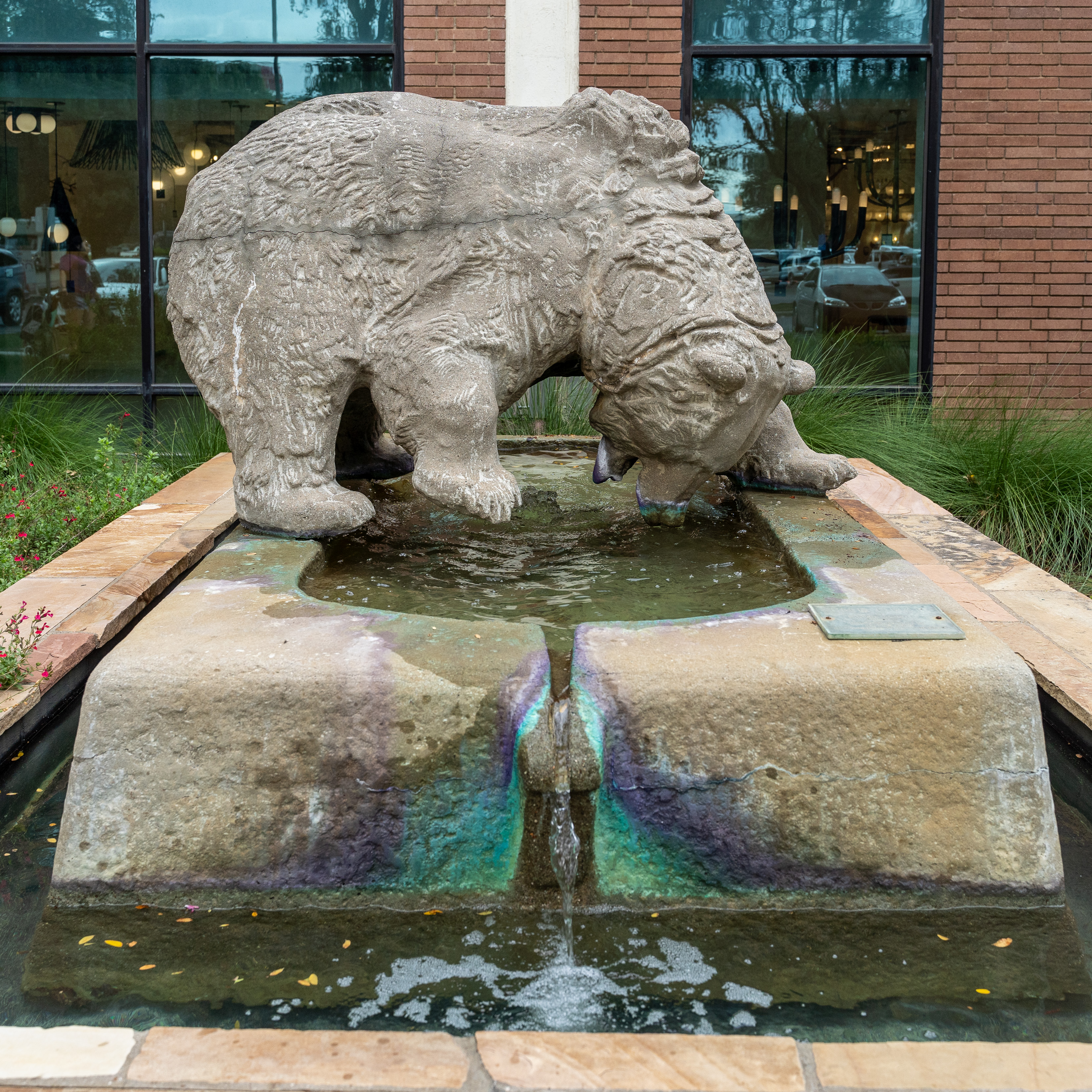
-
-
MARKET HALL
-
LAUGHING MAN
Harry Marinsky (American, born England, 1909-2008)
BronzeHarry Marinsky, painter, sculptor, illustrator, and designer, was born in London to Russian émigré parents who were both high fashion designers. His early illustrations were featured in magazines including “House Beautiful” and “Women’s Day.” Although he was first recognized for his accomplished watercolors, he grew to become a noted sculptor. In the 1970s, he moved to an Italian village where he produced bronze works at the celebrated Tomassi foundry. Marinsky’s sculptures are both keen observations of nature and playful works of whimsy. Laughing Man beautifully represents his style as a portly man leans back in merriment.
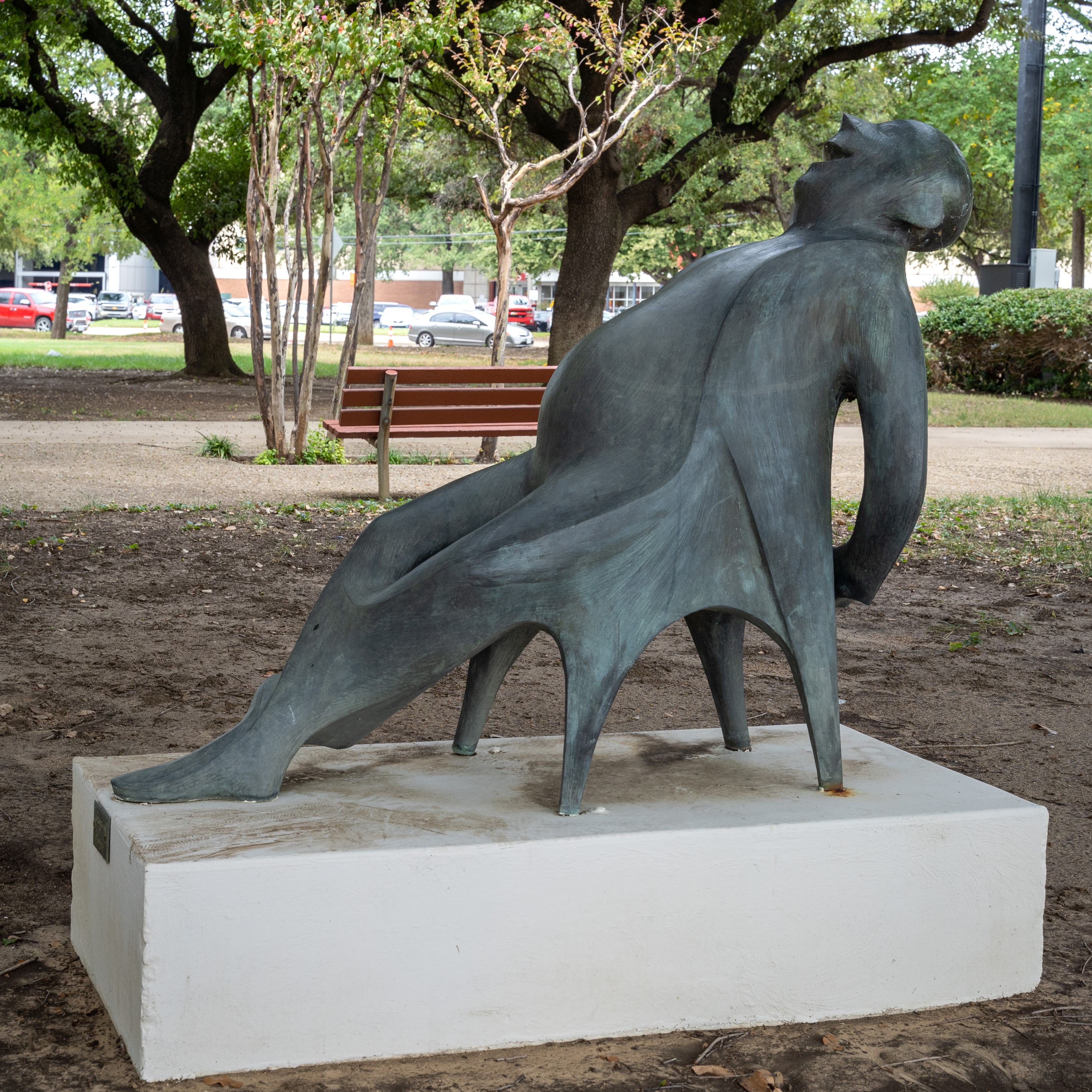
-